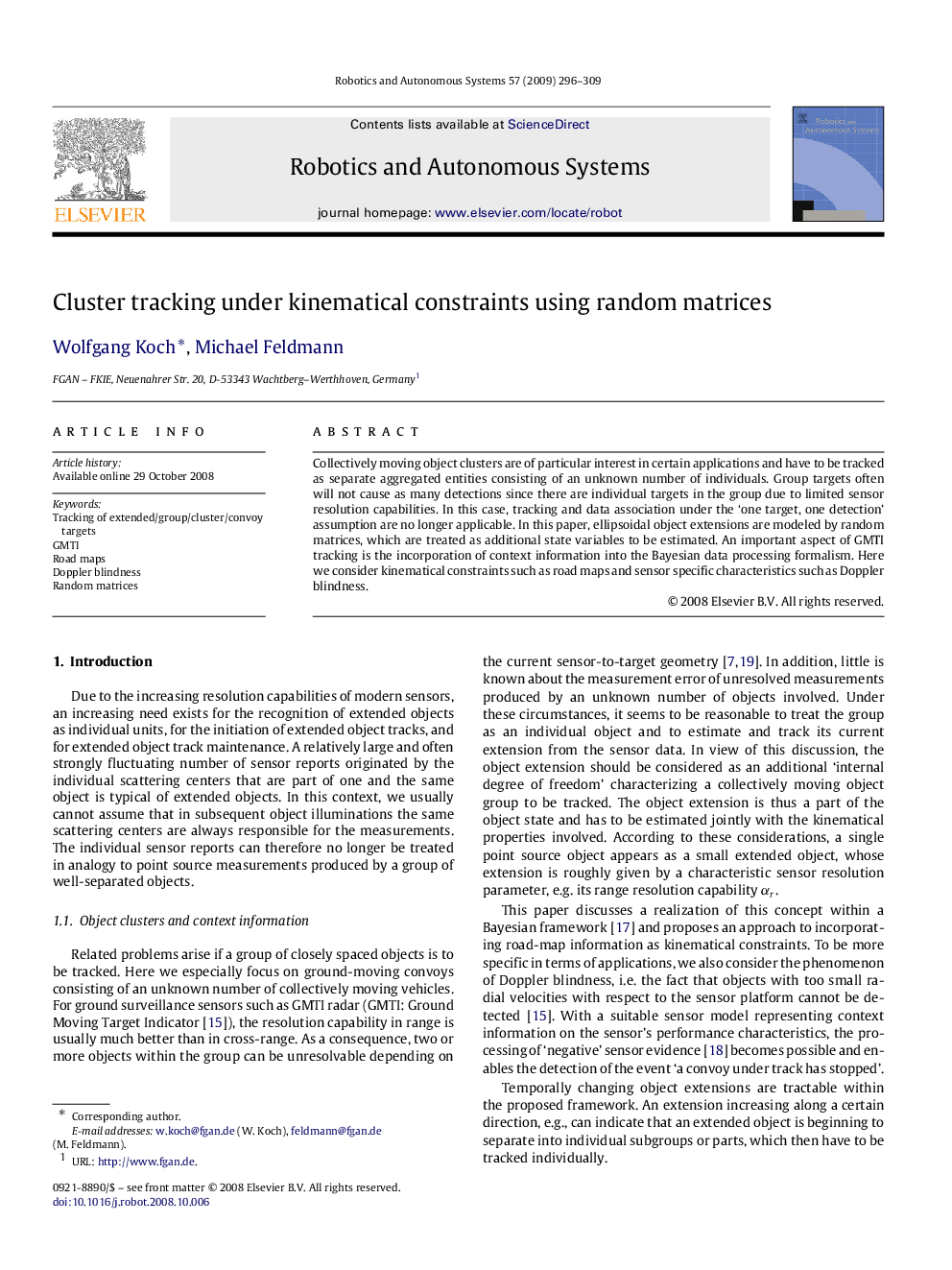| Article ID | Journal | Published Year | Pages | File Type |
|---|---|---|---|---|
| 411981 | Robotics and Autonomous Systems | 2009 | 14 Pages |
Collectively moving object clusters are of particular interest in certain applications and have to be tracked as separate aggregated entities consisting of an unknown number of individuals. Group targets often will not cause as many detections since there are individual targets in the group due to limited sensor resolution capabilities. In this case, tracking and data association under the ‘one target, one detection’ assumption are no longer applicable. In this paper, ellipsoidal object extensions are modeled by random matrices, which are treated as additional state variables to be estimated. An important aspect of GMTI tracking is the incorporation of context information into the Bayesian data processing formalism. Here we consider kinematical constraints such as road maps and sensor specific characteristics such as Doppler blindness.
